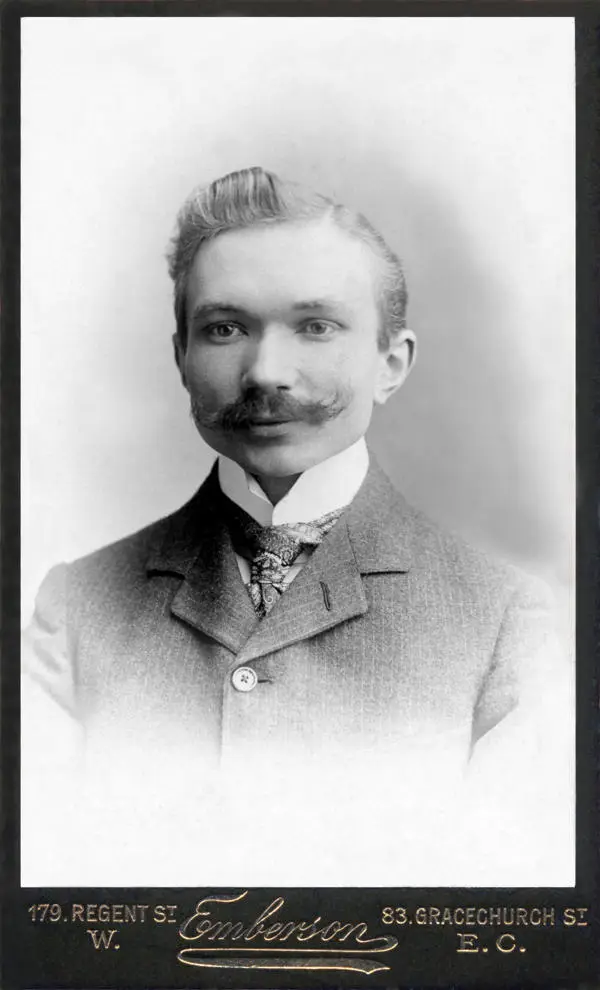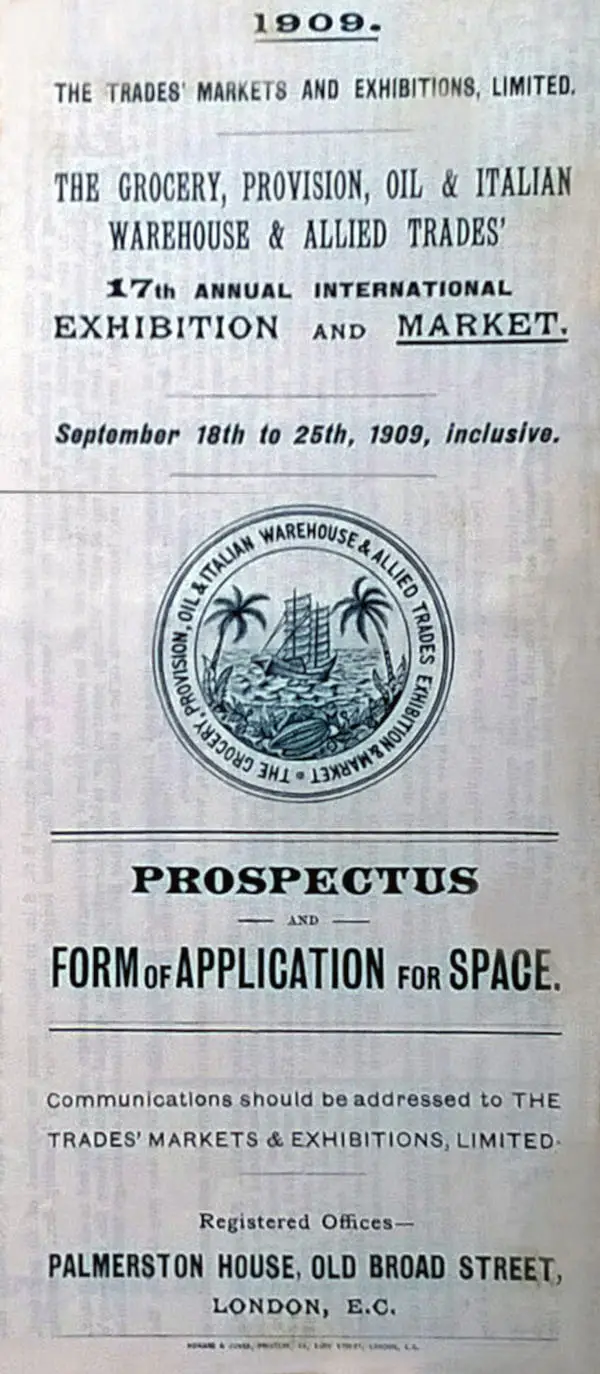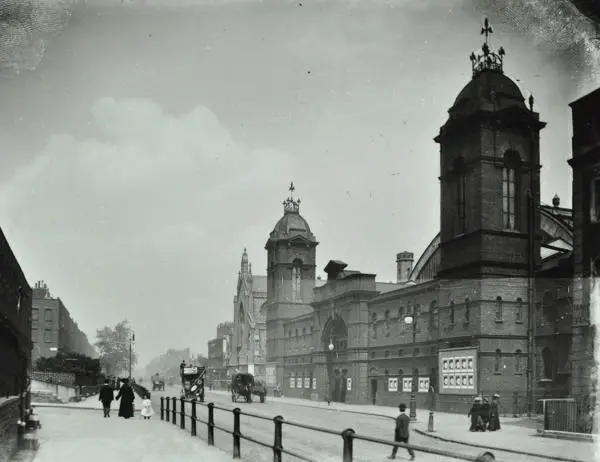Octave Pelletier
Octave Pelletier: a French hypnotist, dandy and olive oil expert in London
Franck Sainte-Martine writes about his great-great-uncle Octave Pelletier, hypnotist, multilingual military censor and huile d’olive de Nice dealer who spent time in London in the early 1900s, and some of the sources and fascinating stories he found about his ancestor during his research at LMA and in other London archives and libraries.
From Louis Rœderer’s castle to hypnotism
Octave Pelletier was born on 24 February 1878 at Bemecourt in Normandy. His father was a gardener at Souvilly Castle which belonged to Louis Rœderer, director of the famous Champagne company. Octave Pelletier spent three years teaching French to the children of Fraulautern’s mayor in Germany. He attended hypnotism performances there and learnt how to hypnotise. In 1899, he had stereoscopic photos published along with his handbook entitled L’Hypnotiseur pratique. Its Spanish version will appear in three editions.

A dandy in London
Octave Pelletier moved to London in 1902 for a two-year stay. This is where he lived:
St Paul's Road, Islington, London in 1901. From no. 109 onwards : Mr Taylor’s Hen and Chickens, a bassinet maker, a laundry, a fruiterer, coffee rooms and house furnishers. At no. 91, 13 residents living in a 4 room working class building : a widower - a posted constable from Walworth ; a commercial traveller from Rochester, his wife from Norwich and their three daughters ; a paper hanger from Luton and his wife, a domestic cook from Bristol and finally, in a particularly overcrowded room, the landlord’s family : M. Frederick Bolton, a clerk, his wife and their daughter from Clerkenwell, their son-in-law, an 18 year old milliner from Wortham and other members of the same trade : a 64 year old needle woman and a master tailor. They were joined a year later by a shirt tailor.
Why London? Why this particular flat? Which room became his? More importantly, how was he making a living ? Was he teaching French, German or even practising hypnotism? These questions are still unanswered. Today’s Hen & Chickens has turned into a North London venue with a rich history of stand-up comedy and 91 St Paul's Road is now a supermarket.
From the middle of the nineteenth century onwards, the relative low cost of photographs led to a general rise in the popularity of portrait photography. Among London’s famous photographers at the time was George Emberson (1833-1905), whose studios could be found at 83 Gracechurch Street. and 179 Regent Street. His portrait of Octave Pelletier shows a dandyish 24 year old man with a quiff and a magnificent moustache. Were Octave’s clothes provided by the photographer himself as sometimes was the case or were they custom-made by his brand-new neighbours?
Olive oil dealer in Nice
In 1903 Octave Pelletier became an export manager for Société des Huiles d'Olive de Nice making the most of his ability to speak French, German, English, Italian and Spanish. How did he learn about this job opportunity during his London stay? Another unsolved mystery.
In 1907, at the age of 29, he founded his own company and became Nice’s 97th olive oil dealer. He also edited two Leon Sarty travel guidebooks. Under that male pseudonym hid Countess Berthe de Sauteiron de Saint-Clément (1850-1926). Nicknamed Zoé, she was a woman of the world, a dramatico-musical works translator – she translated works for the great actress Sarah Bernhardt, an opera singer, an actress, a hiker, a writer, a journalist and the director of an artistic, scientific, literary and social newspaper.
Octave Pelletier won a Gold Medal at Toulouse’s International Exhibition in 1908 and another in Amsterdam. He supplied olive oil to Her Majesty the Queen Mother of the Netherlands and moved to more spacious premises at 27B Gioffredo St, Nice.
Back to Islington
Gold medal winners were often invited to join international exhibition juries. Octave Pelletier became a jury member three times in 1909: in Paris, Milan and London. The Grocery, Provision, Oil and Italian Warehouse & Allied Trades held their seventeenth annual international exhibition and market of fittings, fixtures, machinery, food products, raw material supplies, general equipment and accessories for use in the above trades and their allied industries at London’s Royal Agricultural Hall, Islington.

The exhibition proved to be an opportunity for manufacturers, new firms and various food providers to come together and show thousands of customers and distributors how provisions were collected from all parts of the world. All the different sections of the grocery trades were represented, including retail, manufacturer and wholesale, in all departments, whether of utility or luxury, taste or ingenuity.
“In the new land [the colonies] they always had a surplus of produce. They are now discovering methods and means to export it, thus helping to solve the problem of finding food for the large masses of people in the old country.” declared Hon. Andrew Alexander Kirkpatrick in his opening speech on 18 September.
Among the products on view were fresh fruit, dried and preserved fruits, wheat, tallow, tinned meats, honey, wines and brandy from South Australia. Ireland also played its part with a striking display of butter, bacon, eggs, cream, honey, and even cigarettes, pipe tobaccos and cigars.
Jams, pickles, tinned and bottled fruit, potted meats, condiments, combustibles, polishes for cleaning kitchen utensils and carpet-cleaning soaps were arranged on all sides.
But the most amazing attraction, both elaborate and realistic, was provided by the joined efforts of the Brazilian State of San Paulo and the government of Greece:
'On passing through the entrance to Gilbey Hall [the annexe to the Agricultural Hall], the visitor finds himself suddenly transported into what he might with justice at first suppose to be fairyland. All around are forest-clad mountains, towering to glorious skies. Here, swarthy natives, amid palm trees, are engaged at work […]. There is a street in a flower-decked, marble-built city of South America. Over, in the distance, is the modern city of Athens, nestling beneath the sombre Acropolis, and the mind is momentarily bewildered, first at the wealth and splendour of colour and detail, and, for the rest, at the apparent incongruity of Greece and tropical South America, located within a hundred feet of each other. The secret is disclosed in the words ‘Currants and Fazenda coffee’.', an occasion to show the various processes of growing, gathering, drying, and preparing the currants and coffee for market.
Throughout, the exhibition was of a highly educational character and many competitions were organised: two 50-guinea cups - for the best blend of tea and for the best cup of coffee - were offered. Prizes were awarded to encourage efficiency in canvassing and effecting sales, dressing windows, parcel wrapping, writing advertisements, bacon slicing, and boot polishing, and medals were awarded by the Exhibition authorities. Military bands performed every afternoon and evening. Admission was 1d from 10 am to 6 pm and 6d from 6 pm to 10 pm. The event closed on 25 September.

Crossing the path of celebrities
From 1909 to 1934, Octave Pelletier published many advertising postcards and pamphlets, working with Nice’s famous photographer Jean Gilletta and graphic artist Efff d’Hey. Etablissements Octave Pelletier sold pure huiles d’olive de Nice, unrefined salad oil, soap and even olive oil-based motor oil!
His ‘noble qualities’ were rewarded with the Tunisian Order of Glory (Nichan Iftikhar) by Naceur Bey in 1911. He joined the 18th Territorial Infantry Regiment in 1915. On 25 October, his regiment paraded for review before the French president Raymond Poincaré, George V, the Prince of Wales, the French Minister of War and several British and French Generals. On 11 February 1916, he became a multilingual military censor at Dieppe’s Postal Censorship.
From 1930 to 1933, Pelletier had a famous neighbour when Albert Barnes proposed a mural commission for his foundation to Henri Matisse who rented a former garage next to Etablissements Pelletier. Not satisfied with the first version, Matisse invented a system of pieces of coloured paper cut out and pinned to the canvas. Three versions of the work La Danse exist: The Uncompleted Dance, La Danse de Paris and The Dance II in Philadelphia.
In 1934, Octave Pelletier bought a 16-room villa in Cimiez, Nice and soon renamed it Dreamland. He died in Nice on 21 January 1943. His company bore his name until its permanent closure in 1993. Because his burial plot in Nice’s East Cemetery was not renewed, his grave was taken back by the city in 2008 and his remains put in the ossuary. Next to him lies Prince Mehmed Orhan (1907–1994), grandson of Sultan Abdulhamid II, exiled at the age of 15, shipbuilder in Brazil, taxi driver in Beirut and Damascus, street vendor, cemetery attendant in Paris, aide to Zog I, King of Albania, engaged to the King’s sister and an adventurer in Japan to take back the throne of Turkestan. If reigning, he would have been styled Sultan Mehmed VII.
Further sources
The author’s research took him to a range of London archives and libraries including London Metropolitan Archives, the National Archives, the British Library and Islington Local History and Heritage Centre. You can watch a video about Octave Pelletier : hypnotist, multilingual military censor… and huile d’olive de Nice dealer composed by the author with more images on YouTube.
If you would like, or if you have, any further information about Octave Pelletier please contact octavepelletiernice@free.fr